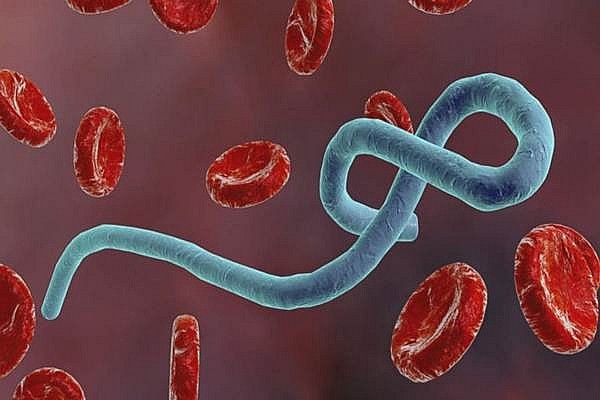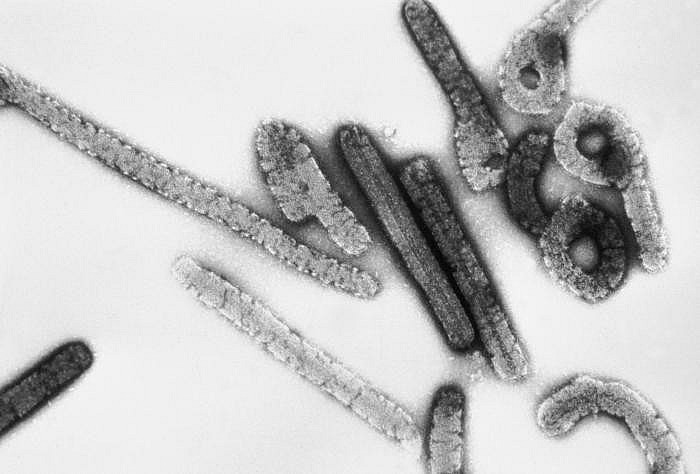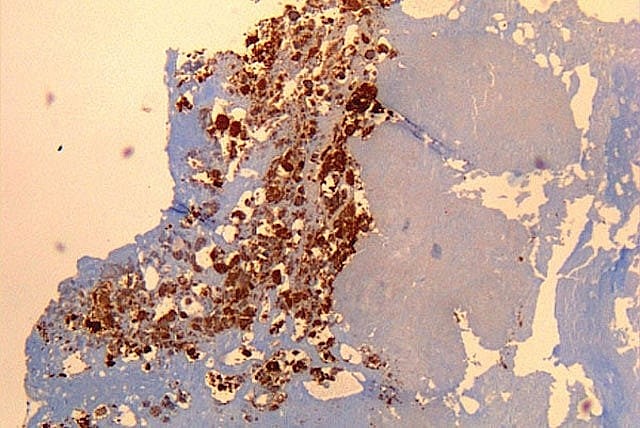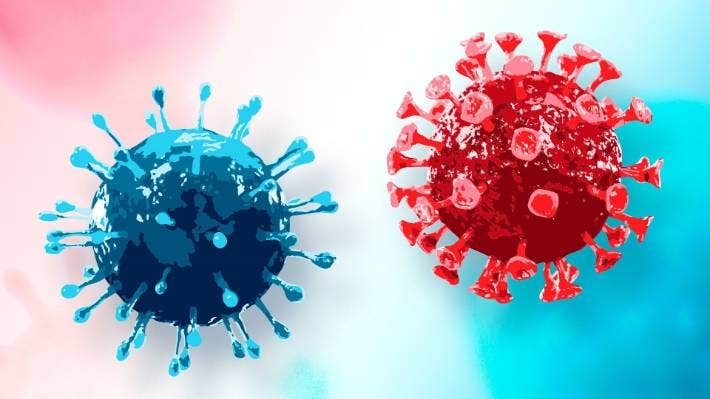Top 10 Deadliest Biological Weapons In The World
 Top 13 Deadliest Events In US History Top 13 Deadliest Events In US History |
 Top 13 World Deadliest Events In History Top 13 World Deadliest Events In History |
 |
| Top 10 Deadliest Biological Weapons In The World. Photo: KnowInsiders.com |
| Contents |
What are biological weapons?
A biological weapon is any infectious agent, such as a virus, bacteria, or toxin, that is deliberately used to cause bodily harm to humans, animals, or nature itself.
They can be used to cause mass casualties, social disruption, economic loss, and environmental problems, and once released, they are extremely difficult to manage due to the fact that they are infectious agents that spread uncontrollably and not just in the target area.
They are silent and lethal weapons that do not belong in our most modern era. However, bioterrorism using microorganisms or infected samples to cause terror and panic dates back to around 1400 BC, when the Hittites sent infected rams to their enemies.
How are biological weapons disseminated?
-With aerosols in the air. A person must breathe in enough particles to be infected with the disease.
-Explosives (artillery, missiles, bombs). The use of an explosive device to administer and disseminate biological agents is less effective than the use of aerosols because the agents are destroyed by the explosion.
-Through food or water: contaminating a city's water supplies necessitates a massive amount of an infectious agent.
-Absorbed or injected into the skin: This method of killing is effective, but it is unlikely to be used to cause mass casualties.
READ MORE: What is Shigellosis: Symptoms, Treatment and Prevention
Top 10 Deadliest Biological Weapons In The World
(Compiled, voted and ranked by KnowInsiders)
1. Ebola Virus Disease (EVD)
 |
The Ebola Virus Disease causes a viral hemorrhagic fever similar to Marburg fever or dengue fever. It is a fatal disease caused by infection with one of the Ebola virus strains transmitted to humans by wild animals. It is extremely lethal and was allegedly developed as a biological weapon by the Soviet Union between 1986 and 1990, but no evidence of its use has been discovered.
That country was also able to mass-produce variant U of the Marburg virus, also known as the Ebola twin virus. Because Marburg has a high case fatality rate of up to 90%, Soviet scientists preferred it to Coxiella burnetii (Q fever).
READ MORE: Top 9 Common Diseases in Winter and Tips to Prevent
2. Plague
The bacterium Yersinia pestis causes pulmonary plague, bubonic plague, and septic plague in humans. The bacterium is transmitted to humans via the bite of a flea that has fed on infected rodents, and once infected, the disease can progress to bubonic plague or pneumonic plague, which develops quickly and is resistant to antibiotics. Its mass production and aerosol dissemination capabilities, as well as its high mortality and spread rate, make it a biological weapon of concern.
| Since the 14th century, plague has been used as a deliberate weapon. During WWII, the Japanese army threw infected fleas into areas of China and Manchuria, and Soviet scientists produced large amounts of antibiotic-resistant plague organisms ready to be used as a weapon. |
3. Cholera
Cholera is a potentially serious and sometimes fatal gastrointestinal disease that could be used as a biological weapon. The only drawback to this acute diarrhoeal disease, which can be fatal if left untreated, is that it does not spread easily from person to person. The bacteria that causes cholera, Vibrio cholerae, was previously used by the United States, Japan, South Africa, and Iraq, among others. In the Paraguayan war of 1867, for example, soldiers threw cholera-infected corpses into water wells to infect their enemies and thus decimate their troops.
| Do you know...? According to researchers, there are 1.3 to 4.0 million cases of cholera each year, with 21,000 to 143,000 deaths worldwide. |
4. Aflatoxins
Aflatoxins are found in molds that grow primarily on different types of nuts. Although deaths from aflatoxins are limited to developing countries, they are still extremely dangerous to humans. Prolonged exposure to these toxins can cause serious health issues, including liver cancer.
However, the fact that they do not function like pathogens makes them an effective bioweapon. Toxins can spread throughout an area in a variety of ways, including aerosol, poisoning the water supply, and even contaminating crops.
 Top 13 Single Deadliest Days In US History Top 13 Single Deadliest Days In US History |
5. Marburg Virus
 |
Marburg virus is one of the deadliest diseases on the planet, with an 88% mortality rate. The disease resembles Ebola in shape and folds into a U, or 6-shaped spiral, but it is antigenically different from that disease. It was discovered in 1967 after an outbreak linked to the study of African green monkeys in Marburg and Frankfurt. The virus is also highly contagious, requiring only person-to-person contact to spread.
After 5-10 days of incubation in a patient's body, symptoms such as fever, chills, headache, and myalgia appear. After about five days, the patient experiences a maculopapular rash, nausea, vomiting, chest pain, sore throat, abdominal pain, and diarrhea. From here, symptoms worsen, potentially leading to jaundice.
What can people do to safeguard themselves?Avoid as much virus exposure as possible, and protect yourself from infected people's discharges. Furthermore, because the symptoms of many hemorrhagic fever diseases are similar, especially in the early stages, there is a need for reliable laboratory confirmation of a case of Marburg virus infection. And, as with Ebola, the person must be isolated immediately and avoid contact with other people. |
6. Q Fever
 |
The bacteria Coxiella burnetii causes the disease. The bacterium is found in nature and infects animals such as sheep, cows, and goats, contaminating their byproducts (milk, feces, and even placenta). Most people who consume Coxiella burnetii do not experience symptoms, but those who do experience flu-like symptoms.
7. Smallpox
Another potential bioterrorism agent is smallpox, a serious infectious disease caused by the Variola virus. Unlike anthrax, it can spread from person to person, and while it is no longer a disease of concern in the natural world, having been declared eradicated in 1980, it is true that if someone had access to the virus - which still exists in two laboratories, one in Russia and the other in the United States - it could be a lethal weapon, given how quickly and easily the disease spreads among humans.
| In 1967, the World Health Organization intensified its efforts to eradicate smallpox. For several years, widespread immunization and surveillance were carried out all over the world. The last natural case was discovered in Somalia in 1977. Smallpox was declared eradicated by WHO in 1980, making it the only infectious disease to do so. This is still one of the most notable and profound public health achievements in history. |
8. Botulism
Botulism is a serious disease caused by the bacterium Clostridium botulinum's toxin. It is relatively simple to manufacture and has a high potency and lethality. This toxin is so dangerous that just one gram of it can kill over a million people. It can be spread via aerosol or through contamination of water and food supplies. It is typically found in forest soils or lake bottom sediments. When did this neurotoxin become a biological weapon?
During the Japanese occupation of Manchuria in the early 1930s, a Japanese group is known to have infected Chinese prisoners of war with botulinum toxins C for military purposes. Biological weapons advanced significantly during the Second World War.
9. Anthrax
One of the most well-known. The bacterium Bacillus anthracis, which causes anthrax, is one of the most lethal biological weapons ever used. In fact, the Centers for Disease Control and Prevention (CDC) classifies it as a Category A agent, which poses a significant risk to public safety because anthrax spores persist in the environment for a long time.
For over a century, this bioweapon has been mixed with powders, aerosols, food, and water. The spores are the most effective weapon because they are invisible, odorless, and tasteless. Letters containing powdered anthrax were sent through the US postal system in 2001. Five people were killed, and approximately 20 were injured.
10. Bunyavirus
Bunyaviridae, a family of 300 viruses, are single-strand enveloped RNA viruses that rarely infect humans and livestock. When infection does occur, it is usually due to arthropod bites from fleas, ticks, and flies. Bunyaviridae cause hemorrhagic fever, and while it is uncommon for humans and animals to become infected in nature, Bunyaviridae and related viruses become extremely stable when distilled down into an aerosol form.
 What are the best face masks to avoid Covid-19 virus transmission? What are the best face masks to avoid Covid-19 virus transmission? In Covid-19 pandemic, it is obvious that people should wear face masks to protect themselves from virus transmission. Here is some of the best |
 Kadha Can Cure COVID-19? Myths Behind Virus Treatment Therapy Kadha Can Cure COVID-19? Myths Behind Virus Treatment Therapy Kadha has been one of the most consumed concoctions in the past one year to boost immunity. Some believe it can cure COVID-19. What ... |
 What is Mu – New Coronavirus Variant of Interest What is Mu – New Coronavirus Variant of Interest The World Health Organization (WHO) has added another coronavirus variant to its list to monitor. It’s called the mu variant and has been designated a ... |
























